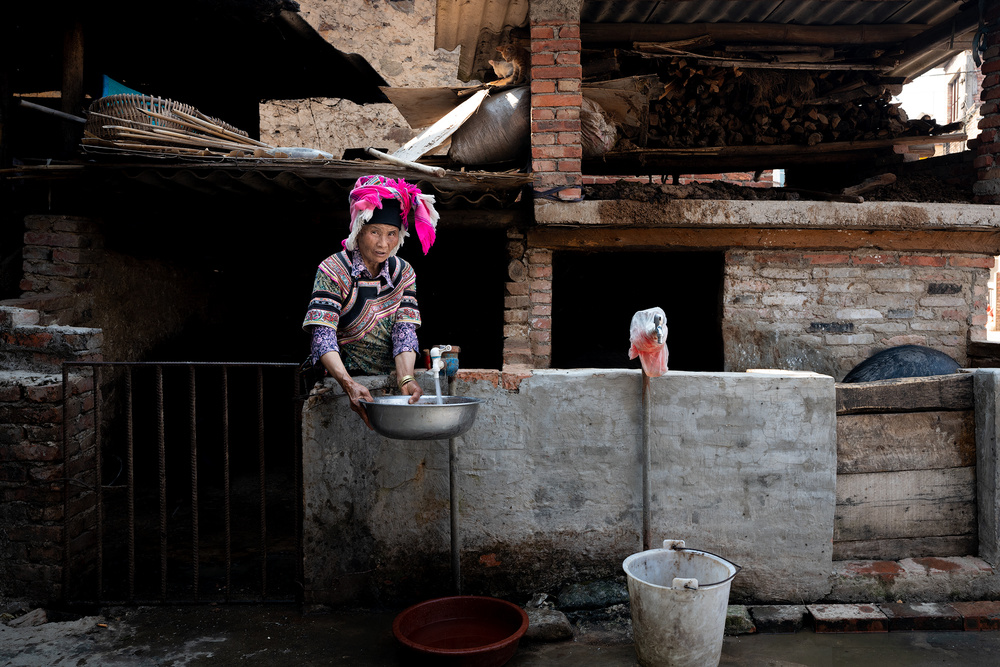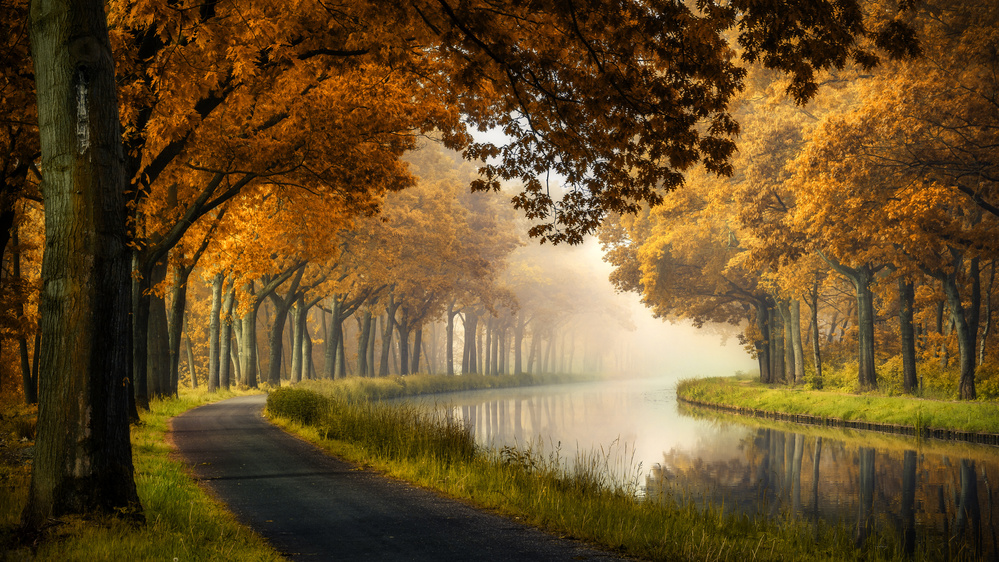SEARCH






|
|
|
|


by Editor Peter Walmsley
Many of us will have been taking pictures for quite a while. And hopefully over that time we will have seen ourselves improving. But how have we, in fact been learning? If you’re like me, the answer will be through a variety of ways: a lot of individual practice; some critique from a friend, judge or an accomplished professional; occasional formal courses; and perhaps use of the growing amount of free material on the internet.
The corporate world has been singing the praises of the 70/20/10 learning model (see Ref. 1) in which effective learning takes place with 70% of the time spent ‘on the job’ i.e. taking the photos, 20% from supported learning with others e.g. attending a camera club competition or learning through social media fora such as 1x and only 10% in formal training courses. As paid photography has declined, many photographers have switched their business model to teaching and now there are many excellent online courses that can be watched or bought from established photographer’s websites. The proportions are not to be slavishly followed but it seems to me that this model fits what we naturally do as photographers pretty well.
Overlaying this principle is the fact that different types of photography all have different learning curves: being a good portrait photographer doesn’t make you a good street photographer, nor a landscape artist. OK, I get that, I hear you say! I shoot a lot and agonise over my results in Lightroom; I read the 1x magazine articles and submit my images for critique; and I’ve numerous books on the subject, plus I’ve just signed up for a travel course in Nepal. What more do I need to?
Well, I can’t give everyone a formula that’s going to get you to first place in every future competition you enter, but recognising that the journey will involve a mixture of techniques and that the largest proportion is going to be your own practice, is a good place to start, obvious though it may sound. And because it’s the largest part, I’m going to focus on that and offer 6 (hard learned) tips of my own. Take them or leave them: if they resonate, all well and good. If not, at least there’s no harm done.
Readers of my previous 1x articles will know that travel photography is one of my favourite categories, simply because the new and the unusual helps me break my creative constraints. Many a time I’ve wandered my own city of London with a camera and returned with ‘nothing’. So, tip number 1: find something tangible to inspire creativity.
Travel photography is a bit of a collective label for more specific types including street photography, portraiture and landscapes, all within the context of an alien setting. If that’s your focus, you will have read some books, maybe taken a course or two and received some feedback from an annoying judge last time you entered a competition. And then promptly forgotten the lot. So, tip no. 2, use the 20% and the 10% learning to remember just one technique you’re going to practice next time you’re out in the field. Just one! And each time you do this, you’ll find that the previous ones stick so your skill will build. It’s really only emphasising the ‘hear, see, do’ approach to increase retention, but it does work.
Some of the things I’ve practiced using this technique are as follows and some are quite basic.
Don’t forget to look around the image and at the background.
The background is the second most important part of the image after the subject, but I still sometimes forget to do this when the subject is particularly interesting or transient.
See all the objects in this image that could compete with the subject, where are the bright and the dark areas; how do the strong horizontal and vertical lines divide the picture and interact with the subject.

'Yuanyang' by Roberto Marchegiani
Look for lead-in lines and move your position so that they point towards the subject.
Look at the river banks of this picture as lead-in lines, particularly the near bank. Where does it start? Where do the lines lead to? Notice also the framing device of the trees around the brightest part of the picture.

'A calm morning' by Sus Bogaerts
Practice framing the subject.
Look for frames in an image and set yourself up to use them. Arrange your stage and wait for an actor if you have to.
This isn’t a classical frame such as an arch or doorway but is still a framing device.
Look at the light.
I mean really look where the light is coming from before raising the camera, particularly on people shots. Good simple sources of soft light include windows (side on) and subjects just inside a doorway.
Here’s a good example of soft sideways window light. Note that the photographer has chosen to include the window in the shot and had to pay attention to keeping some detail in the highlight areas whilst still achieving good exposure in the shadows.
Shoot at your subject’s level.
This is particularly important with children and animals. Or consciously choose a high or low vantage point to diminish a subject or give them dominance.
Most animal photos on the 1x gallery are taken at eye level but this one’s slightly unusual in that it is shot below the main subject’s eye level to give it more dominance.
These are just 5 examples from the 1x gallery to illustrate the points here above.
There are many others of course.
Tip no. 6 is to take the pressure off. I don’t do so well at this myself. If you’re visiting a new place and you’ve only got one opportunity to capture something good, that pressure will get in the way. I use various techniques to alleviate that pressure including doing some homework on the internet beforehand, using a local guide with at least an appreciation of photography (not always easy to find, but I try); doing a recce of the area beforehand if time allows; taking some practice shots and reviewing them there and then (and tell yourself that they are practice shots.); and if the light’s not right or the weather’s poor or the subjects are really not co-operating but you can see the shot you want, go back again the next day – so build flexibility into your schedule.
Tip no. 7 is to take more pictures than you think you need. If you’ve previsualised a scene and think you’re getting the shots, particularly with human subjects the success of an image can turn on capturing a transient expression or a particular geometry of arms and legs. And when you think you’ve captured that, change something (position, focal length, lens) and do it all again. You can always delete.
Tip no. 8 is not to judge too hastily. Many a time I’ve returned from a shoot thinking, well that was mediocre. There are no winners there. You worry about details in the shadows and blown highlights, you anguish over pin sharp subjects and whether you really did get something usable when the light forced you to hand hold at 1/10s. And you never noticed that tree in the background in what was otherwise a well composed group shot. Keep calm and look at everything in Lightroom on a bigger screen. Delete the real rubbish straight away and look critically at the rest. If you’ve been shooting for a while you may be surprised how often the brain has gone into automatic and done the thinking subconsciously.
And tip no. 9 is straightforward: go with the flow, see what unfolds, wander off, explore. If that means (temporarily) leaving your guide/partner/coach party, so be it!
Ref. 1: The 70/20/10 training model.
See for example: https://trainingindustry.com/wiki/content-development/the-702010-model-for-learning-and-development/
 | Write |
 | Bob Sanders PRO Very very useful article. It certainly crystallised some valuable points for me. Thanks for making it so clear. |
 | gNo A very good review, with a lot of tips Peter
Kind regards
gNo
Jeannot |
 | Yvette Depaepe CREW Fine article and great tips, Peter! Thanks ... and congratulations to the authors of the selected photographs. Cheers, Yvette |